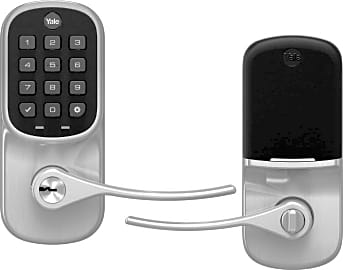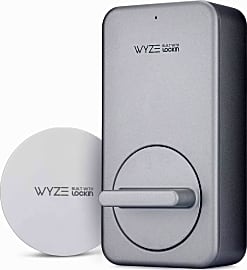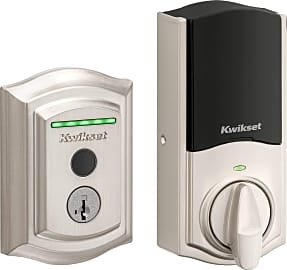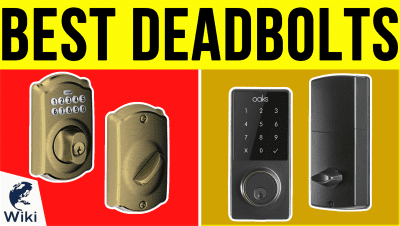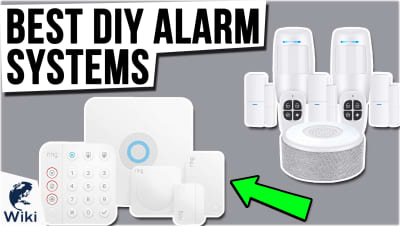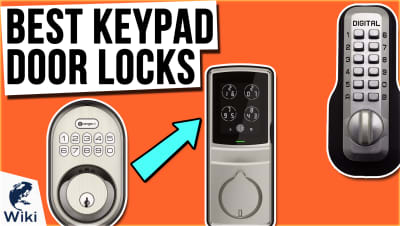The 6 Best Smart Locks

This wiki has been updated 37 times since it was first published in May of 2016. If you are worried about a home invasion, an office break-in, or any other form of theft, you can protect yourself with more than just old-fashioned deadbolts by using one of the wireless smart locks we've selected. Offering Wi-Fi and Bluetooth connectivity, and employing everything from PIN codes to biometric fingerprint recognition, they take your security precautions into the 21st century. When users buy our independently chosen editorial recommendations, we may earn commissions to help fund the Wiki.
Editor's Notes
April 30, 2021:
Real-world implementation and actual, tangible refinements make all the difference with things like door locks, because a malfunctioning lock can strand you outside your home or let criminals in. For that reason, we've redone a good portion of the Wiki this time around. Additionally, it's worth mentioning that while there's a glut of smart locks on the market right now, it's important to stick with a tried-and-true model from a reputable brand. After all, we are talking about basic home safety here, and furthermore, a surprising number of models exhibited dealbreaker behaviors; some were shockingly easy for amateurs to pick, and others were remarkably inconsistent in the setup and unlocking processes. We've dug deep to make certain we exclude any with those types of fatal flaws.
With that in mind - and because getting something reliable is infinitely important for homeowners - we recommend that most people go with the UltraLoq U-Bolt Pro. The Schlage Encode is just about as reliable, and should appease anyone who isn't satisfied with the UltraLoq's slightly limited smart home compatibility. If you insist on a physical knob, the Yale Assure Lever is almost certainly the right choice, and if all you need to control is a deadbolt, the Wyze Gateway is a fine and moderately priced option.
January 31, 2020:
While much of this ranking, like our previous list, is dominated by brands with long histories in deadbolt production (Schlage, Kwikset, etc.), we wanted to make sure we weren't leaving out any upstarts or other brands that deserved recognition. On one hand, that can be dangerous, because those smaller companies can fold or hit walls in the quality of their production, as was the case with the Prisma M107, which had enough problems with its fingerprint recognition that we had to send it away. In its place, we found a model by an innovative company in the Oaks Electronic Front Door, which has one of the most intuitive smartphone apps in the category.
A few of the models by Schlage and others did see upgrades, with the Schlage Encode Deadbolt finally integrating Wi-Fi connectivity into its build, where the previous model required an external piece of hardware to connect with your network. We also found an excellent new model from Samsung, the Samsung Digital Rim SHS-D607, which has an anti-peep randomization function that also spreads out any fingerprint residue that savvy crooks could use to determine the numbers in your code.
A Smart Lock For A Smart Home
Temporary access codes can also be assigned to guests for entry, which will expire after a specified period of time.
If the thought of misplacing your house keys bothers you, and you'd like to bring the security of your home into the twenty-first century, then a smart lock affords you both peace of mind and the freedom to unlock your front door with the touch of a finger. Or, through the use of an appropriate code carried by your smartphone, too.
A smart lock is an electromechanical tool that is designed to lock or unlock a door upon receiving a specific set of instructions from a device containing both a cryptographic key and a wireless protocol to authorize a person's entry. Just like traditional locks, a smart locking system requires two parts to function properly, the lock and key.
Unlike a traditional metal key used to unlock a door's deadbolt, the smart key typically takes the form of either a mobile smartphone app or key fob, both of which are capable of delivering wireless authorization for entry into a home by the key holder. This can be accomplished with access codes on the smartphone and any combination of Bluetooth or WiFi technology, which also affords the homeowner the ability to control access remotely from work or even when stuck in traffic.
The smart lock is available in a variety of styles, technologies, and materials, but the majority of them are constructed from hardened steel and tamper-resistant alloys for additional security. The internal components of most smart locks include a series of interfacing electronics, computer hardware, and a motorized drive that are all brought to life by a power assembly equipped with either a live electric current or a series of batteries. When an access signal is approved, the lock's motor assembly moves the pins and tumblers in order to turn the door's deadbolt.
When using a smartphone with a companion security app to manage a smart lock, the app is capable of sending electronic codes to the lock, disabling codes, or displaying a history of lock activity, which the homeowner can use to monitor access in or out of the house. Temporary access codes can also be assigned to guests for entry, which will expire after a specified period of time. Depending on the app being used, it can also program the home's internal environmental controls to come on automatically when the smart lock has been activated. The app can also be used to send text alerts for power outages and even codes to the cell phones of contractors, children, or housekeepers for authorized entry.
Investing In High-Tech Security
The choice to invest in a smart lock doesn't have to represent a be-all, end-all solution; it doesn't have to be a complete replacement to one's traditional locking system. For example, if you're worried about electronic tampering and the ease of gaining access to your home using a mobile phone, you can still keep your traditional key system and simply add the smart lock as another layer of security.
The choice to invest in a smart lock doesn't have to represent a be-all, end-all solution; it doesn't have to be a complete replacement to one's traditional locking system.
It's important to realize that a smart lock system can be used in conjunction with other home security measures, so it can be considered an addition instead of a replacement. Many smart locks integrate both traditional and high-tech functions, so you can choose when to use one or the other. This can be especially helpful should one happen to misplace their metal key and need another way to gain access to their home.
A lock running on both electricity and battery power is also quite useful. Should your home or neighborhood experience a blackout, you can remain confident that your smart lock will continue to function normally on its battery until electrical power has been restored.
History tracking capability is also important for the lock one chooses, particularly if there are potential prowlers and strangers around the neighborhood or if you plan to have several people coming in and out throughout the day. Alerts can be sent to your mobile phone to inform you of those people who have recently approached your front door and when.
Other smart locks offer illuminated access keypads on the outside of your front door, which can be a welcome convenience for anyone in the household coming home late at night.
A Brief History Of Smart Locks
The earliest known lock-and-key device was discovered among the ruins of Nineveh, the capital of ancient Assyria. This style of lock eventually evolved into the more familiar Egyptian wooden pin lock, which consisted of a bolt, door fixture, and accompanying key. By the time of the Industrial Revolution in the 18th century, advances in both design and engineering allowed for more complex manufacturing of lock and key systems.
By the time of the Industrial Revolution in the 18th century, advances in both design and engineering allowed for more complex manufacturing of lock and key systems.
The modern version of the double-acting pin tumbler lock was invented by Linus Yale, Sr. in 1848. This design used pins of varying lengths to prevent the lock from opening without the proper key. Inspired by both his father and ancient Egyptian pin locking mechanisms, Linus Yale, Jr. invented a smaller key in 1861 with serrated edges that could interface with the same internal pin system designed by his father.
Although digital keypad entry and wireless locking systems have been used in commercial buildings for many years, it is thought that the budding interest in home consumer smart lock technology grew out of the popularity with smartphone technology during the late 2000s, particularly after 2012 when cell phones integrated high-speed mobile broadband capabilities.



